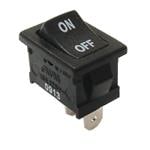New VR system is set to change psychiatric diagnosis
Researchers from the University of Copenhagen have developed a virtual reality (VR) system designed to improve the way psychiatric conditions are diagnosed.
The system aims to provide a more objective and standardised method for assessing mental health conditions, moving away from traditional questionnaires and interviews that rely heavily on subjective reporting.
Why was this development made?
Mental health diagnoses are often based on self-reported symptoms and clinical interviews, which can sometimes lead to inconsistencies. The researchers wanted to create a tool that could offer a more accurate, measurable, and immersive way to assess psychiatric conditions. By using VR, they hoped to simulate real-life situations that could trigger responses linked to different mental health disorders, allowing for a more thorough and precise diagnosis.
How was the VR system tested?
To evaluate the effectiveness of their system, the researchers conducted a study involving two groups: one consisting of participants diagnosed with psychiatric conditions such as anxiety disorders, schizophrenia, and post-traumatic stress disorder (PTSD), and a control group of individuals without any diagnosed mental health conditions. Participants were placed in a VR environment where they experienced scenarios designed to assess their cognitive and emotional responses such as a video of a crying baby, a discussion in a canteen, and a cramped elevator. These scenarios were carefully designed to test factors such as attention, emotional regulation, and stress responses.
The VR system recorded physiological and behavioural responses, such as eye movements, reaction times, and levels of anxiety or discomfort. This data was then analysed to determine how participants reacted in comparison to control groups.
What did the study find?
The results showed that the VR system could successfully identify differences in responses between individuals with psychiatric conditions and those without. The technology was particularly effective in detecting conditions such as anxiety disorders, schizophrenia, and post-traumatic stress disorder (PTSD). Participants with these conditions displayed distinct patterns in their responses, helping researchers distinguish between different mental health disorders with greater accuracy.
By providing a controlled and repeatable testing environment, the VR system demonstrated potential in offering a more consistent and data-driven approach to psychiatric diagnosis. The researchers believe that with further development, this tool could complement existing diagnostic methods and improve early detection of mental health issues. The study included 100 participants, so further research with larger group sizes is needed to validate these findings.
VR in medical applications
Beyond psychiatric diagnosis, VR is also being used in other areas of medicine for example, in training, pain management, and rehabilitation. In pain management, immersive VR experiences are being used to help reduce patients’ perception of pain. In rehabilitation, it is used to assist stroke patients in regaining motor skills by simulating real-world tasks in a safe and controlled environment. Not only this, but medical professionals are using VR for training purposes, allowing surgeons to practise complex procedures before performing them on actual patients.
Since its initial conception, VR has come a long way and it is only set to become more useful in the future.







